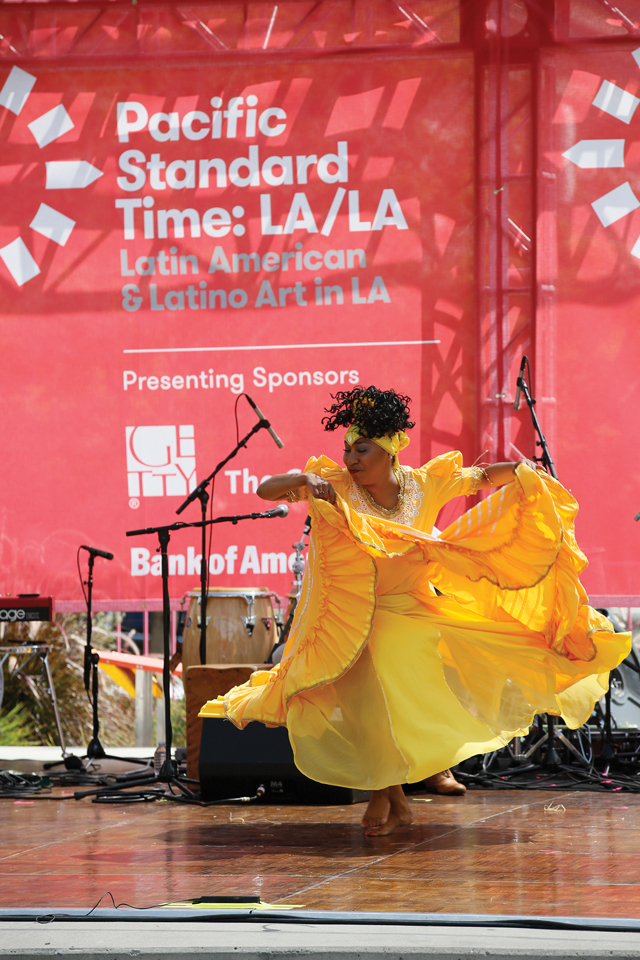
he Getty Foundation-sponsored “Pacific Standard Time: LA/LA” – an array of Latino and Latin American-themed art exhibitions and events – was a boon for the local economy, according to a report released last week.
A Los Angeles Economic Development Corp. study concluded that the second iteration of Pacific Standard Time spurred $430 million in economic activity, $376 million of which came to Los Angeles County.
The event led to 4,080 jobs, which ran the gamut from transportation and warehousing to accommodation and food services.
Some of the jobs were temporary, lead study author Somjita Mitra said in an interview. The jobs produced $187.9 million in income, a figure included in the overall $430 million total.
Pacific Standard Time staged exhibitions and events from last September to January, with a general theme of Latin-American and Latino art. The art was exhibited at 70 museums around Southern California and other locales, with 86 percent of the events taking place in L.A. County.
The event was financed by $20.5 million from the Getty Foundation and $32.4 million from other sponsors, including Bank of America Corp.
Measuring the economic impact of a discrete cultural event is challenging, said Tom Chang, a USC business school professor. The study could be off the mark, he added, because it assumes “that Getty and all of the participating institutions would have done nothing if they had not done Pacific Standard Time.”
“The comparison they are making is if the Getty buried that $20.5 million in a hole in the ground,” Chang said. “If, for example, the Getty had spent that $20.5 million in grants to help local artists and craftsmen sell and promote their work, it might have had an even larger economic impact.”
Mitra, however, stressed that the study was careful to exclude incidental revenue and jobs – for example, not counting the sale of a general admission museum ticket at a venue that featured a Pacific Standard Time special exhibit, or a museum hiring a new worker amid the Pacific Standard Time exhibit.
“The jobs we counted were created solely by Pacific Standard Time spending,” Mitra said.
Last year’s Pacific Standard Time was a sequel to the 2011 original, which took a broad look at Los Angeles art from 1945 to 1980. The first Pacific Standard Time had a comparable economic impact to the second, according to the LAEDC.
Bank of America requested LAEDC to conduct the first Pacific Standard Time study, said Getty spokesman Ron Hartwig, and the positive results from that report prompted the Getty to seek an economic analysis on the second Pacific Standard Time.
Hartwig said measuring Pacific Standard Times’ economic impact is difficult because of the widespread nature of the event and lack of comparable efforts. He said it has been unique among U.S. cities.
Chicago is slated to have its own version – called Terra – which is scheduled to run this summer, featuring Windy City artists from the late 19th century to
the present.
